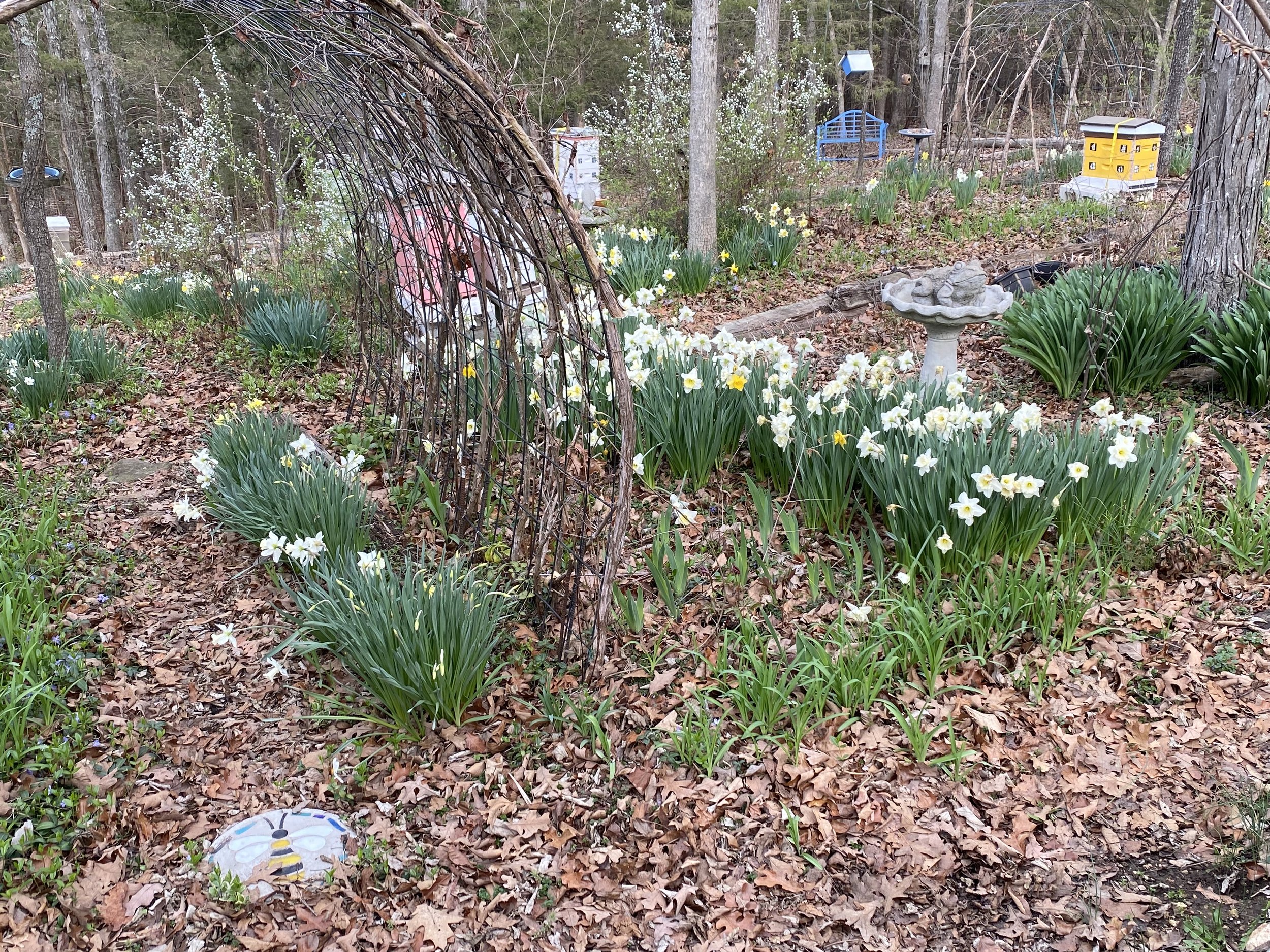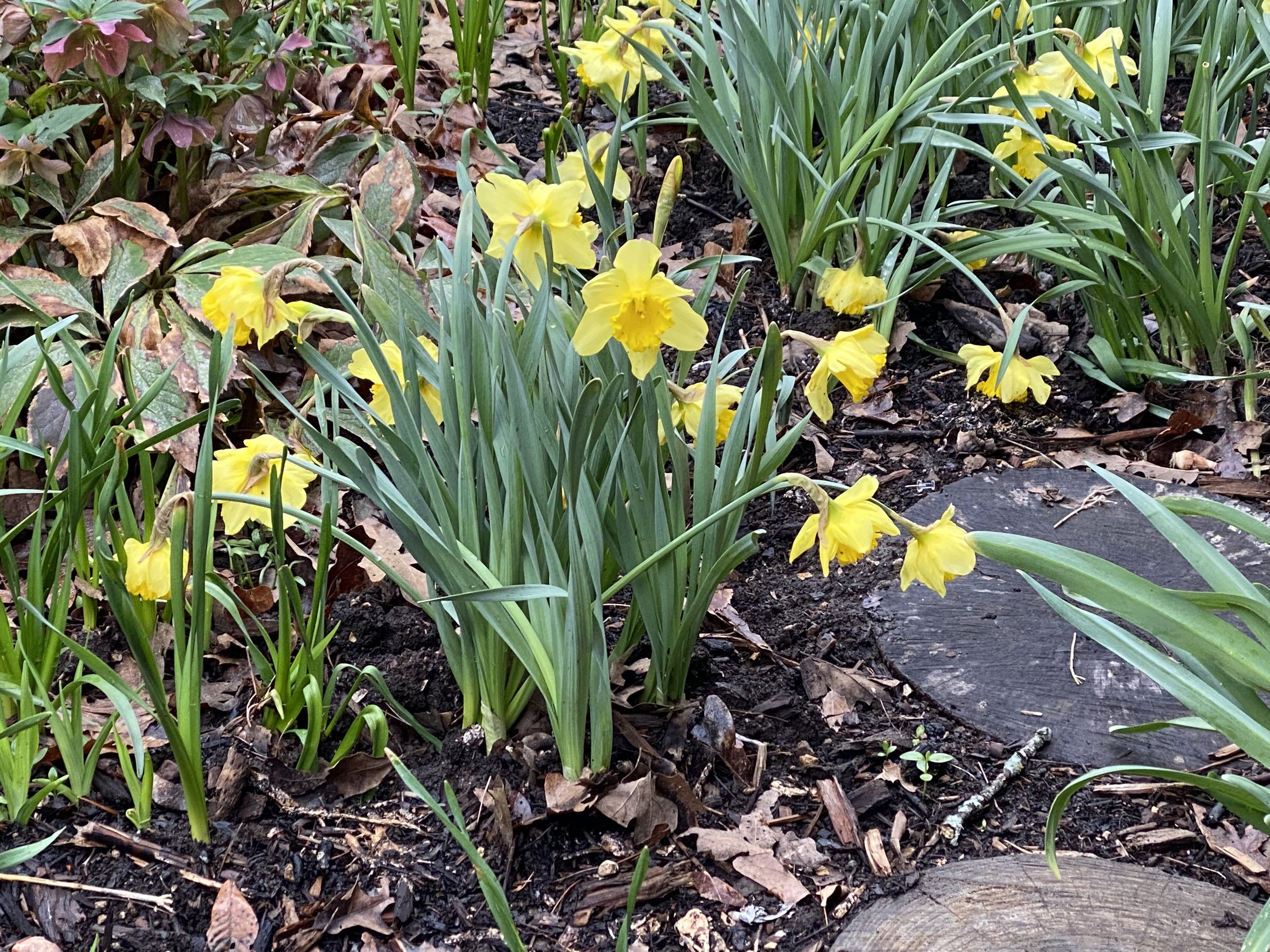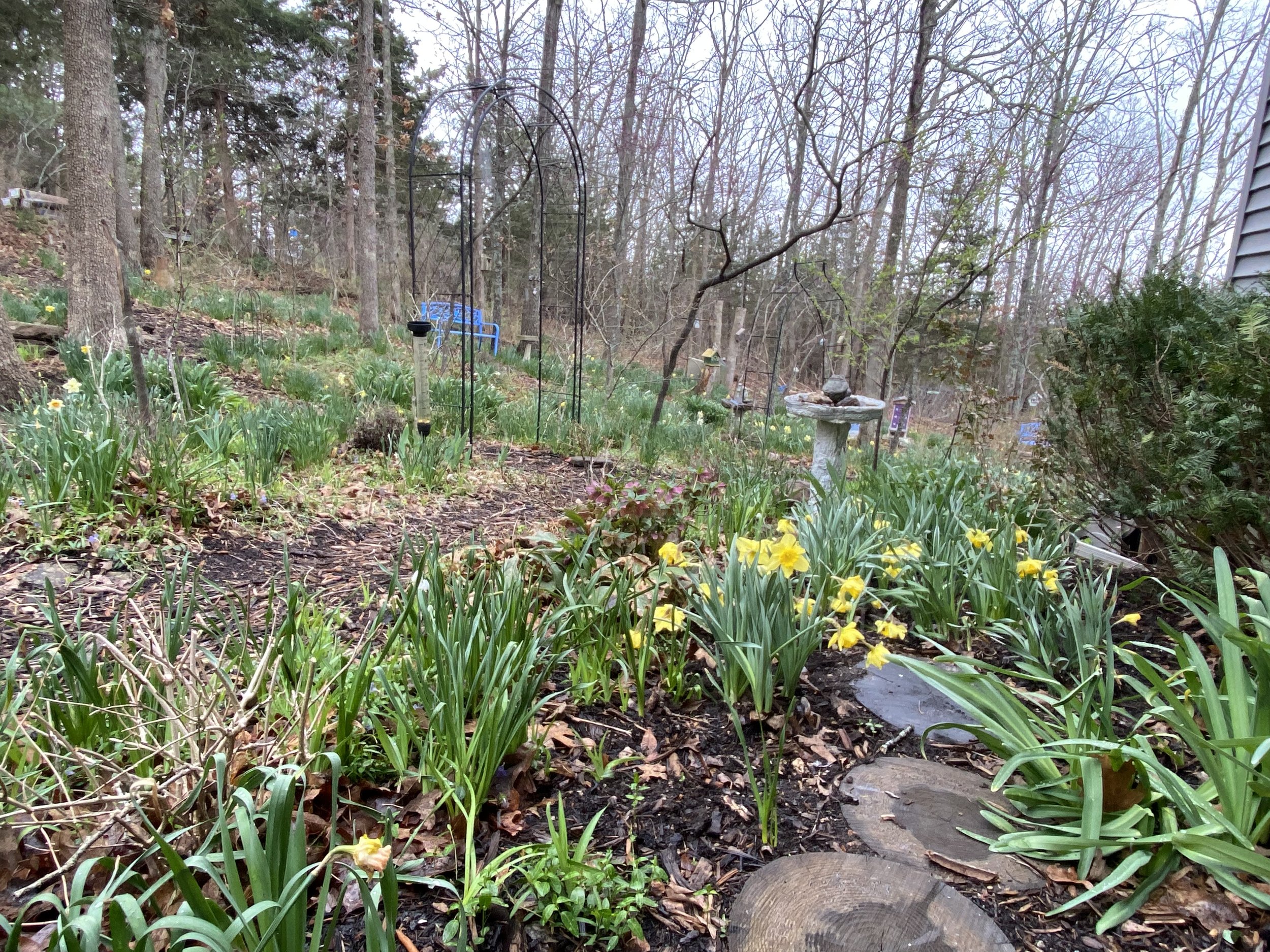April Gardening Jobs
/1. Identify places where you want to add fall bulbs for maximum enjoyment. (Charlotte Ekker Wiggins photo)
April Gardening Tasks
Spring sprung a good 4-6 weeks early this year but winter is having a last hurrah this week. At this time of year in USDA Hardiness zone 6b, there are many garden tasks to tackle:
2. Clean out composters and add to flower beds and fruit trees. Leave a good bucket of finished compost as starter for the next compost batch and start adding leaves, grass clippings if you have them, kitchen scraps and water. Don’t forget to mix.
3. Put up your birdhouses if you haven’t already. Songbirds are natural pest control and add so much interest to our gardens. 60% of all bird species depend on insects for their food so if you have a lot of birds, you should naturally have less pests. Include at least one hummingbird feeder.
4. Lilacs should be blooming this month. Prune lilacs immediately after they bloom. If you wait until later in the season, you will be cutting off next year’s blooms.
5. Continue to sow lettuce, spinach and radish seeds every 10 days or so for fresh spring salads in your pot garden. Call it your garden in pots, if you prefer.
6. If you like to grow peas, this is the last month to plant sugar snap peas and snow peas, they prefer cooler weather conditions. To keep their roots happy, mulch with cardboard to keep them cool, then add a layer of wood chips.
7. Mark off areas behind other plants for fall bulb planting. (Charlotte Ekker Wiggins photo)
8. As daffodils and tulips continue to grow and bloom, sprinkle compost around them to keep the bulbs well fed. When the flowers fade, remove them by snipping off the flower heads. Leave the greenery until it turns yellow; the green leaves help the bulbs store energy for next season’s blooms. Don’t mow the leaves down with the lawn mower until they turn yellow or the bulbs will gradually become smaller and you will not have any more blooms next spring.
9. If you have a vegetable garden area, this is a good time to add cardboard to kill off any growth prior to summer planting. Don't till. The prevailing thought now is that tilling damages the soil ecosystem. Kill the plants you don’t want, make holes to plant the ones you do, or make trenches to plant seeds, and cover.
10. Start your summer plants inside in containers you can transplant outside later; tomatoes, peppers, watermelons, squash, pumpkins, cucumbers, zucchini.
11. Don’t forget companion plants to reduce crop damage; basil is a good bug deterrent for a lot of plants and grows easily from seed.
12. Plant for pollinators as well. I love zinnias and so do butterflies and bees. Native plants such as New England Asters, yarrow and purple coneflowers are good choices for pollinators because they have long blooming seasons. For another good annual, try sunflower seeds. Birds will love the seeds in the fall.
13. Plant more native trees along with compact dwarf fruit trees. Although planting native flowers is still good for pollinators, trees provide better, and more reliable, pollen sources for bees. The smaller fruit trees are good pollen sources as well and, when pollinated by bees, will also give you easily accessible fruit to pick.
14. Start thinking about fall planting. Many suppliers take spring bulb orders for fall delivery.
For more gardening, beekeeping, cooking and easy home decor tips, subscribe to Garden Notes.














